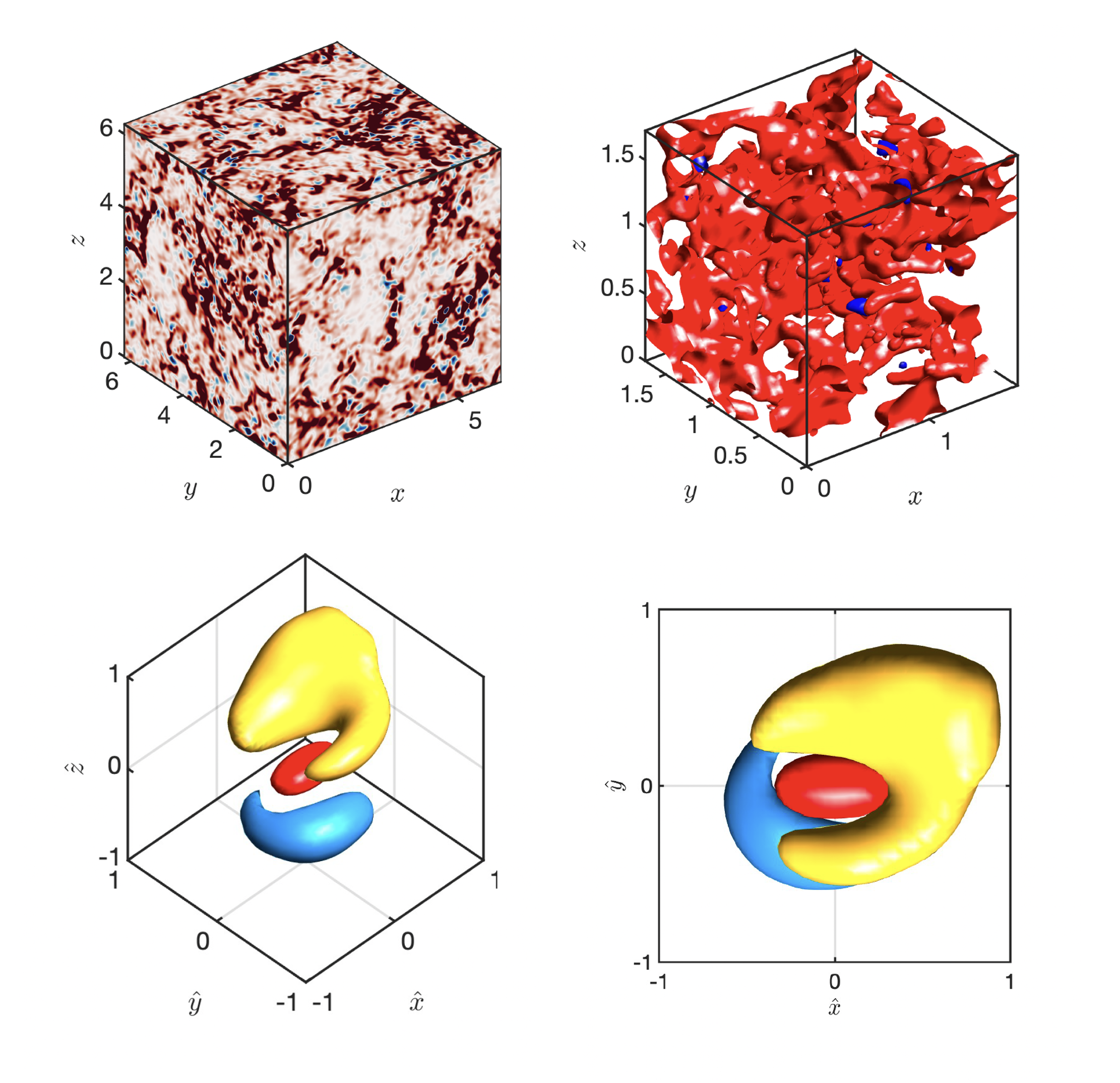Coherent Structure of the Energy Cascade

The energy cascade, i.e. the transfer of kinetic energy from large-scale to small-scale flow motions, has been the cornerstone of turbulence theories and models since the 1940s. However, understanding the spatial organization of the energy transfer has remained elusive. In this study, we utilize numerical data of isotropic turbulence to investigate the three-dimensional spatial structure of the energy cascade. Specifically, we focus on analyzing the averaged flow patterns associated with intense energy transfer events in the inertial range. Our findings indicate that forward energy-transfer events are predominantly confined in the high strain-rate region created between two distinct zones of elevated enstrophy. On average, these zones manifest in the form of two hairpin-like shapes with opposing orientations. The mean velocity field associated with the energy transfer exhibits a saddle point topology when observed in the frame of reference local to the event. The analysis also suggests that the primary driving mechanism for energy transfer involves strain-rate self-amplification among local scales, followed closely by non-local interactions that promote interscale vortex stretching and strain self-amplification.